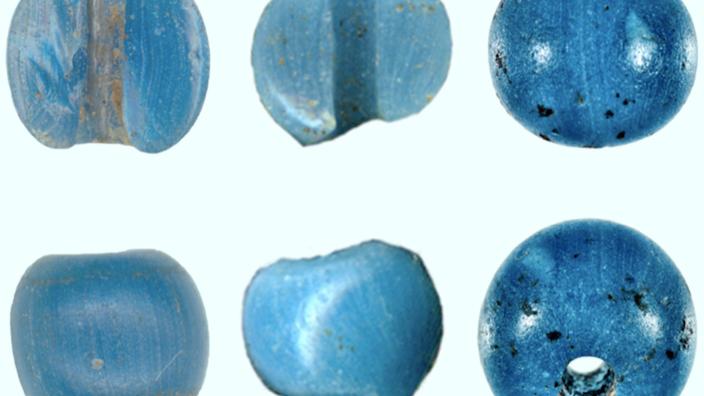They crossed thousands of kilometers, several continents, successions of cities, ports and deserts to land on the edge of the Arctic Circle, in the hands of Eskimos.
A dozen small Venetian blue glass beads have been found in the most unlikely of places: along the Brooks Range, Alaska.
For their discoverers, their presence would testify to an indirect pre-Columbian trade - and over a very long distance - between Europe and the westernmost tip of the American continent at the beginning of the 15th century.
That is to say a few years before Christopher Columbus crossed the Atlantic for the first time.
Read also: Found in Hampshire, an 11th century Chinese currency opens up new avenues for medieval trade
This hypothesis is defended in a study published by the scientific journal
American Antiquity
.
Two archaeologists from the University of Alaska at Fairbanks present several Venetian pearls found in three different archaeological contexts and dated, thanks to radiocarbon measurements, in the 15th century, between 1397 and 1488. “
The pearls question the currently accepted chronology. for the development of their production method, their distribution and their circulation on the American continent.
In the absence of transatlantic communication, the most likely route these pearls have taken to get from Europe to northwest Alaska is through Eurasia is the Bering Strait
, ”the researchers say.
The archaeologist Mike Kunz, co-signer of the study, considers that these pearls attest to a pre-transatlantic trade.
“
We almost fell backwards
,” he explains in a statement from the University of Alaska.
This is the first time that unmistakably European materials have appeared in the New World by land transport.
"
Read also: The Venice Carnival without tourists, but still with as much magic
A long distance trade
The presence of these pearls mounted in necklace on these sites would be, according to the researchers, the result of trade flows between China and northern Asia then, around the Arctic Circle.
“
A trader may have stowed the pearls in his kayak on the western shore of the Bering Sea.
He then dipped his paddle and traveled to the New World, now Alaska.
The crossing of the Bering Strait at its narrowest point is about 52 miles (83 kilometers) wide,
”archaeologists argue.
Punyik Point, one of the sites with Venetian pearls, was precisely a former Eskimo seasonal camp located at the strategic crossroads between a trade route connecting the Bering Sea to the Arctic Ocean and the caribou transhumance ground.
The site has long been known to American archaeologists, who excavated there in the 1950s and 1960s as well as in 2004-2005.
Read also: Alaska: at the borders of the Far North
Asked by Gizmodo, archaeologist Ben Potter, from the Center for Arctic Studies at Liaocheng University of China, supports the study's conclusions.
“
Their interpretation of the movement of pearls in trade from East Asia to the Bering Strait is plausible,
” he said
.
We have examples of bronze that have made their way to Alaska, so I think the idea of long-distance trafficking of objects, especially prestige objects (small, portable and valuable) that move over long distances is reasonable.
"
If the discovery has yet to be substantiated by other studies, the pre-Columbian appearance of Venetian glass beads on the American continent could already be perceived as a malicious snub from beyond the Serenissima's grave.
Originally from Genoa, his historic rival, Christopher Columbus would probably not have appreciated this early Venetian wine.

